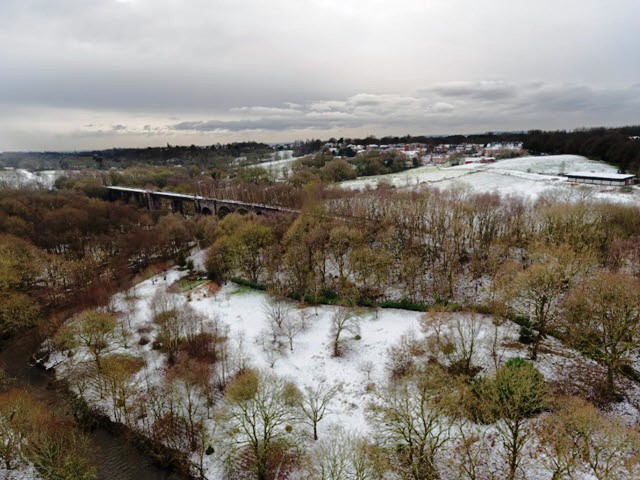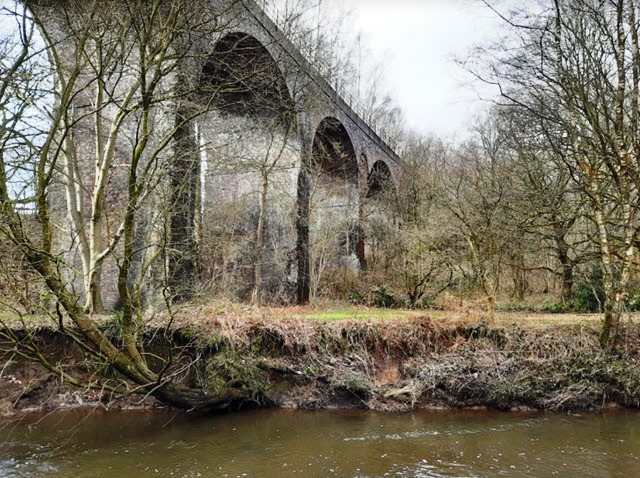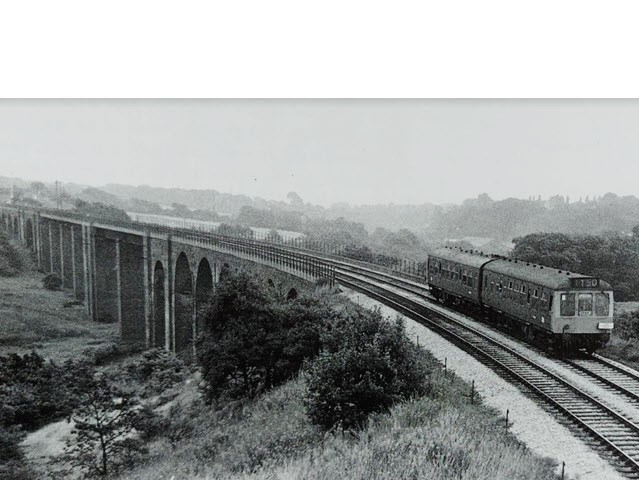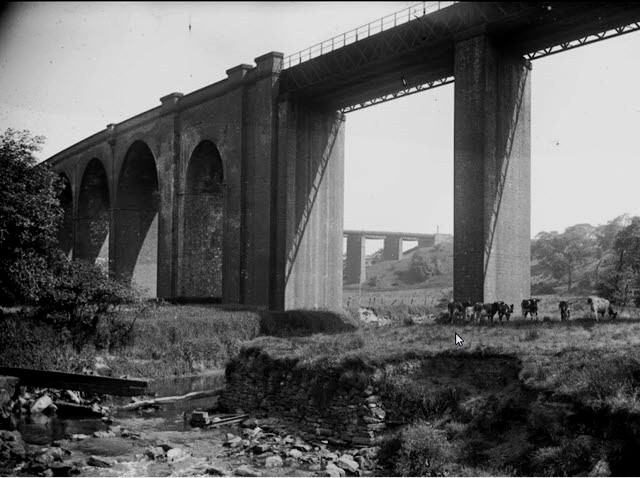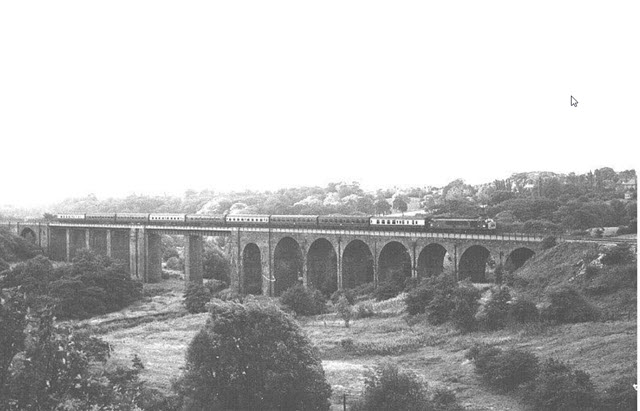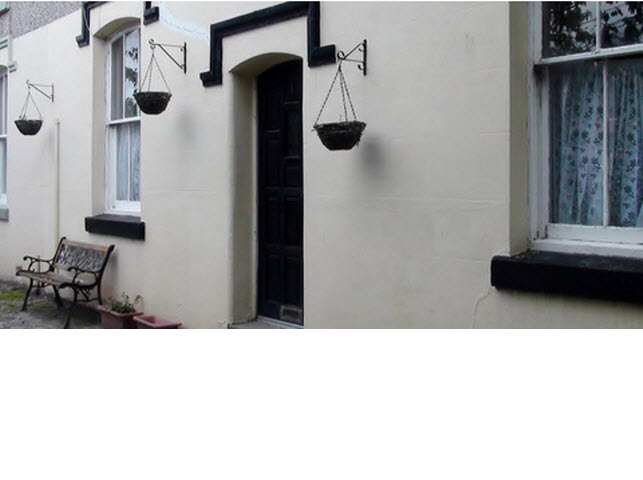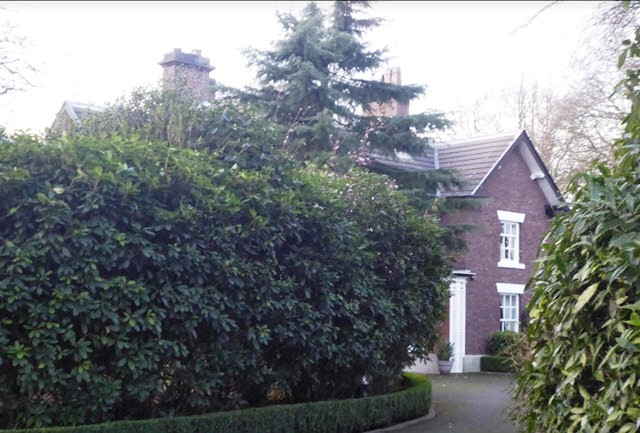The Standish-Whelley Viaduct (20 Bridges)
off Chorley Road, Standish, WN6 0AA, Haigh
Part of Group:
At Risk: Yes
Description
Description – Twenty Bridges
A derelict Victorian railway viaduct consisting of 13 brick arches and six iron and concrete spans. There are eight arches at the northern end of the viaduct and five at the southern end. The viaduct was built to carry the railway over the deep Douglas Valley at a hight of 50 feet. The structure is largely intact, as is the track bed. The brick work on some of the arches has been badly damaged by weathering and mature trees are growing on the arched sections of the track bed (as of 2021).
History
After the Lancashire Union Railway had been established and opened in 1869 it was realised it needed a northern outlet to link it to the Northern Union Railway (West Coast Line). For this purpose, an act of parliament was passed in June 1877 approving a line to run from a new junction on the LUR line at Whelley to a junction on the NUR line just south of Standish Station. The line would run southeast to northwest across the deep Doulas Valley. A viaduct was needed to carry the line over the deepest point of the valley.
The contract to construct the line was awarded to Holme and King in 1880 and was worth £44,986. The majority of which would be used to build the viaduct. The viaduct was built consisting of 13 brick arches, 8 at the northern end and 5 at the southern. At the centre there are 6 iron and concrete spans carrying it over the river at the highest point of 50 feet.
The line opened on 5 June 1882. It crossed and ran underneath the LUR line from Boar’s Head to Redrock which had been opened in 1869. An undercut or burrowing junction was also added near to Standish Station taking the Northbound trains underneath the West Coast Line, so they did not slow things down by crossing it.
The Standish Extension became part of the Whelley Loop Line which looped around the east side of Wigan avoiding the busy town centre stations. This also increased the capacity for trains to travel north and south around Wigan and reduced the need for expensive widening of the West Coast Line.
For many decades the viaduct carried passenger trains and also coal and other freight across the valley. Passenger trains running from Manchester to Windemere, and Blackpool used the line until the early 1960s. The line was also frequently used when trains needed to be diverted around Wigan using the Whelley Loop.
The line closed in the early 1970s. The Standish Junction signal box being decommissioned on 15 January 1973.
The viaduct remains a landmark and is known locally as “Twenty Bridges” (although there are only 19 arches and spans there is a bricked up false arch near the centre of the viaduct. As of 2021 funding is being sought to convert it into a cycle and walkway as part of a Greater Manchester Bee initiative.
Sources:
Bob Pixton, Main Line Railways Around Wigan, Runpast Publishing, 1999
Wigan Observer 3 August 1866
John Marshall, Lancashire Union Railways, The Railway Magazine April, May, June 1970
Dennis Sweeney, The Lancashire Union Railway, Triangle Publishing, 2010
Jim Meehan & Andy Lomax 2021

